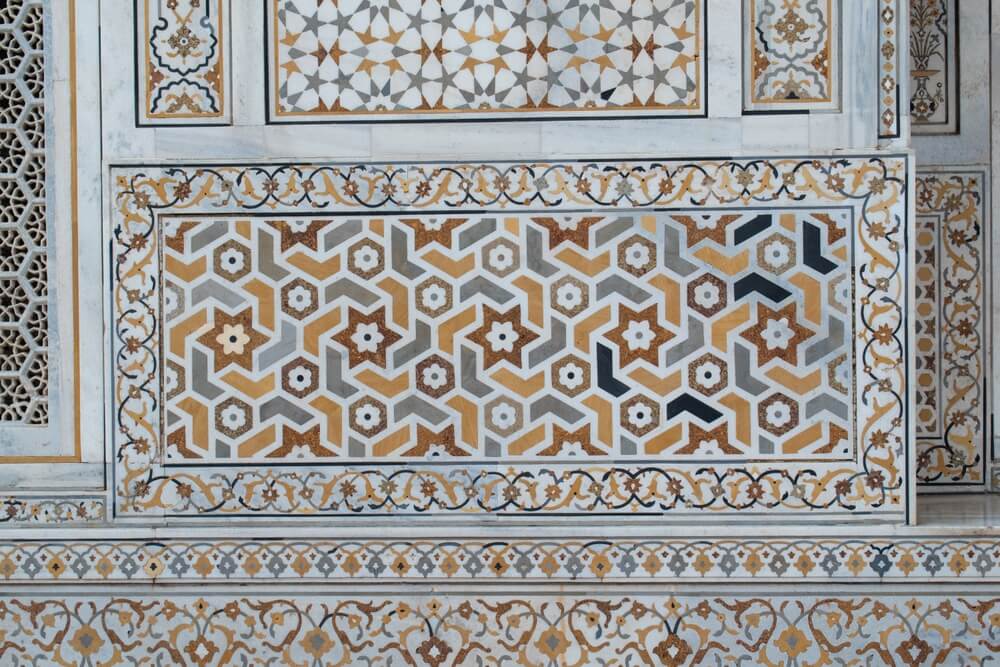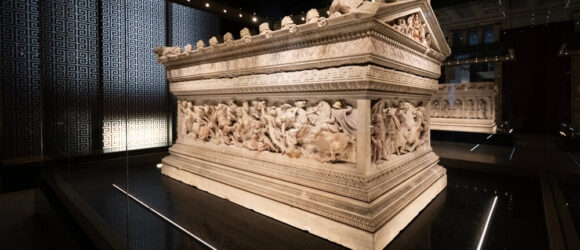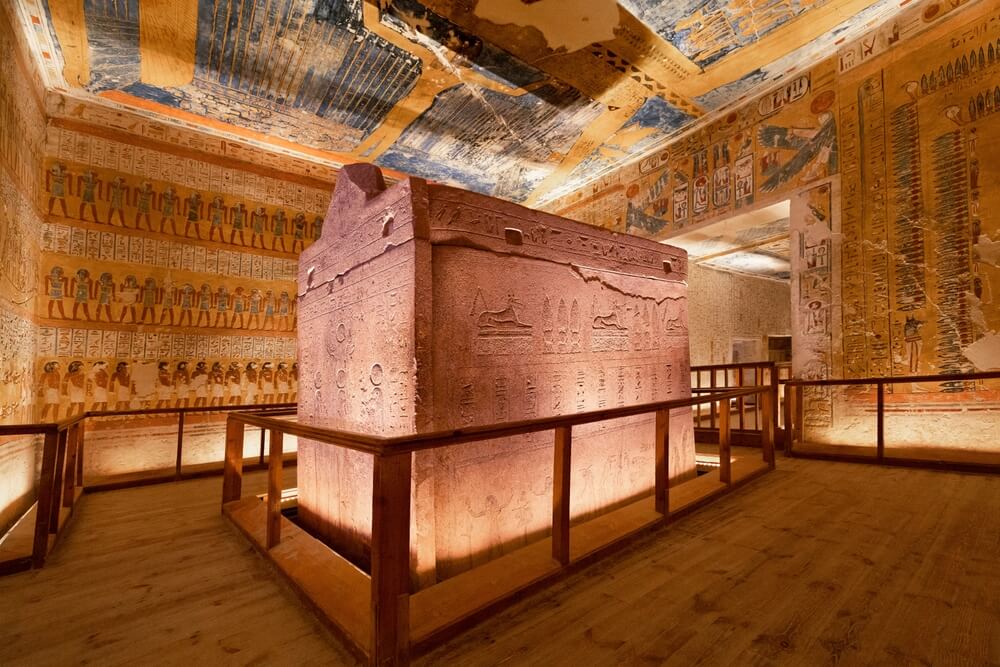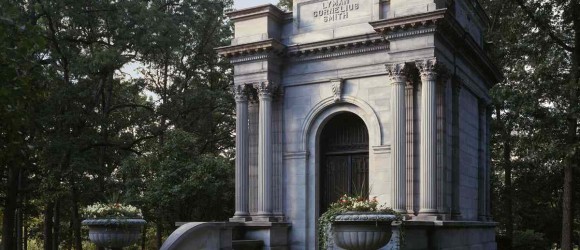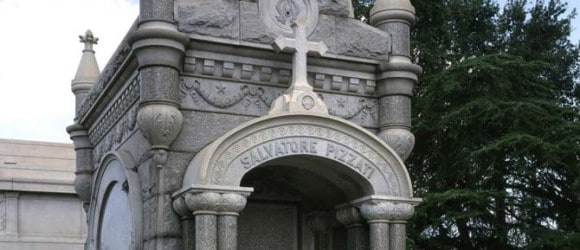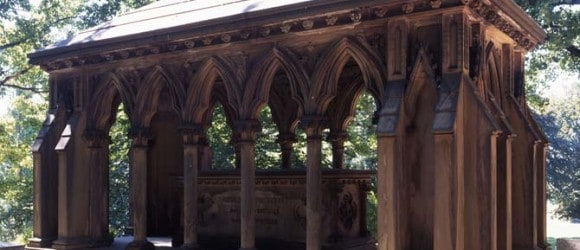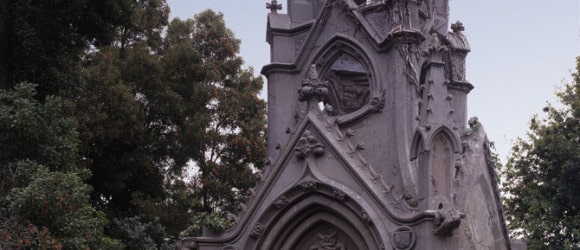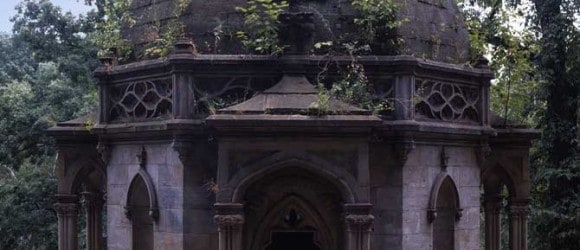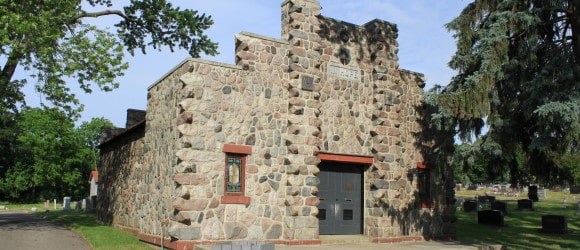Taj Mahal Mausoleum: The Architectural Details Most Visitors Miss
The Taj Mahal Mausoleum, located in Uttar Pradesh, India, is one of the most iconic monuments in the world, drawing millions of domestic and foreign visitors every year.
While most visitors admire its sheer beauty, many miss the intricate architectural details and historical nuances that make this white marble mausoleum a true masterpiece of Mughal architecture.
Timeless Details of the Taj Mahal Mausoleum
- Symbol of Eternal Love: The Taj Mahal Mausoleum was commissioned by the Mughal Emperor Shah Jahan as the final resting place for his beloved wife Mumtaz Mahal, making it a timeless symbol of devotion.
- Architectural Mastery: The monument showcases the pinnacle of Mughal architecture, including the main dome, square plinth, central chamber, and intricate decorative elements crafted from white marble and semi-precious stones.
- Hidden Details Many Miss: Beyond the iconic white marble façade, visitors often overlook features such as black marble inscriptions, pietra dura inlays, the symmetry of the main inner chamber, and the careful layout of the Taj Mahal complex.
- Historical and Cultural Significance: Built under the guidance of Shah Jahan, the Taj Mahal is part of a larger UNESCO World Heritage Site in Uttar Pradesh, near Agra Fort, reflecting the artistry and planning of the Mughal era.
- Magical Visitor Experience: The monument’s beauty is enhanced during the full moon, when the main dome and reflecting pool create an ethereal atmosphere.
The Mausoleum Taj Mahal: A Monument to Love
Commissioned by Mughal Emperor Shah Jahan in 1632, the Taj Mahal was built as the final resting place for his beloved wife, Mumtaz Mahal. Their love story has become legendary, and the mausoleum stands as a symbol of eternal devotion. Mumtaz Mahal and Shah Jahan envisioned a structure that would reflect both grandeur and delicate artistry, and the result is a timeless marvel of the Mughal era.
The Taj Mahal Complex
The Taj Mahal complex is more than just the main mausoleum. It includes a guest house, the southern gate, lush gardens, and a reflecting pool that perfectly mirrors the monument’s stunning facade. Visitors often focus on the main dome, but the entire layout, including the square plinth, is meticulously designed to convey symmetry and balance, a hallmark of Islamic architecture.
Architectural Marvels Often Overlooked
While the milky-white marble of the main mausoleum catches the eye, the Taj Mahal’s real beauty lies in its subtle details:
- Decorative Elements: Intricate carvings, calligraphy, and floral patterns adorn every surface, combining elegance with precision.
- Semi-Precious Stones: The use of semi-precious stones inlaid in marble, known as pietra dura, creates colorful accents that shimmer in sunlight.
- Black Marble Inscriptions: Quranic verses in black marble provide both spiritual and artistic significance.
- Main Inner Chamber: The central chamber, housing the cenotaphs of Mumtaz Mahal and Shah Jahan, is surrounded by four smaller rooms that balance light and shadow.
- Main Dome: The onion-shaped central dome, visible from afar, achieves its perfect symmetry through advanced engineering techniques of the fifth Mughal Emperor.
Historical Significance
Constructed under the supervision of Emperor Shah Jahan, the Taj Mahal Mausoleum stands near other historical landmarks such as the Agra Fort, also a UNESCO World Heritage Site. Shah Jahan planned this site meticulously, ensuring that the mausoleum not only honored his wife but also reflected the height of Mughal artistry.
Archaeological surveys over the years have preserved the site’s original features, revealing how red sandstone was used for the surrounding structures, enhancing the luminous effect of the white marble. The entire monument serves as a testament to the Mughal Emperor’s vision and the grandeur of Mughal architecture.
Experiencing the Taj Mahal
Consider experiencing this cultural landmark yourself. The monument takes on a magical quality during full moon nights, when the main dome glows softly, and the reflecting pool amplifies the ethereal beauty. Foreign tourists and domestic visitors alike particularly cherish this enchanting effect. Many also explore artistic replicas and learn about the Mughal era to better appreciate the Taj Mahal Mausoleum’s historical and cultural context.
Elevate Your Legacy
From its central chamber to the decorative elements inlaid with semi-precious stones, the Taj Mahal Mausoleum is a marvel of Islamic architecture and Mughal design. Every detail, from the square plinth to the main dome, reflects the vision of Shah Jahan and his enduring love for Mumtaz Mahal. For those visiting Uttar Pradesh, a closer look at the intricate artistry and historical context makes the Taj Mahal not just a monument but a story carved in white marble.
Whether you’re walking along the reflecting pool or gazing at the moonlit dome, the Taj Mahal Mausoleum offers layers of beauty that even seasoned visitors might miss.
Experience the unmatched combination of handcrafted artistry, eternal durability, and personalized service with a custom private mausoleum designed uniquely for your family by connecting with Eternal Mausoleums™ by Forever Legacy. Our team will help you create a mausoleum that reflects your legacy and stands the test of time.
What Is a Sarcophagus? From Ancient Egypt to Chernobyl’s Containment Solution
The word “sarcophagus” may conjure images of ancient kings in massive, sealed tombs. However, this fascinating structure has played many roles throughout history, from sacred burial chambers to emergency containment systems.
So, what is a sarcophagus? Let’s explore the meaning, origin of the word, and how this ancient term has become relevant in the modern world, particularly in the aftermath of the Chernobyl disaster.
Key Takeaways
- Definition and Origins: A sarcophagus is a stone coffin traditionally adorned with inscriptions or carvings. The word comes from Greek roots meaning “flesh-eating stone,” originally describing limestone believed to decompose bodies quickly.
- Cultural Significance: Ancient Egyptian sarcophagi were richly decorated and played a central role in burial rituals, intended to protect the mummy and guide the soul to the afterlife. Roman sarcophagi emphasized artistic expression, often carved with mythological scenes or family tributes.
- Modern Evolution: The term took on new meaning in the 20th century when it was applied to the concrete and steel containment structure built over Chernobyl’s damaged reactor, highlighting a shift from sacred burial to environmental protection.
- Enduring Symbolism: Across history, sarcophagi have symbolized humanity’s desire to honor the dead, preserve legacies, and safeguard the future, whether through ancient craftsmanship or modern engineering.
Sarcophagus Definition: A Tomb That Tells a Story
At its core, the definition of a sarcophagus is simple. It’s described as a stone coffin, typically adorned with a sculpture or inscription, and associated with the ancient civilizations of Egypt, Rome, and Greece.
The term comes from the Greek sarx (flesh) and phagein (to eat), translating to “flesh-eating stone.” This name originally referred to a type of limestone that was believed to decompose the body rapidly. But beyond its literal meaning, the sarcophagus represents ritual, reverence, and remembrance across civilizations.
The Egyptian Sarcophagus: Majesty and the Afterlife
No discussion of sarcophagi is complete without highlighting the Egyptian sarcophagus – arguably its most iconic form. Used by ancient Egyptians to entomb pharaohs and nobility, these massive burial containers were central to Egyptian religion and belief in the afterlife.
The earliest stone sarcophagi appeared in Egypt during the Old Kingdom (c. 2686–2181 BCE). They were carved with spells and symbols intended to guide the deceased into the afterlife. Over time, these evolved in design and detail. During the Middle Kingdom, sarcophagi began featuring more elaborate inscriptions, and by the New Kingdom, they were often painted, carved, and richly adorned with treasures.
Ancient Egyptians believed the sarcophagus protected the mummy. Protection of the body was essential for the soul’s eternal journey. In fact, a shining sarcophagus was symbolic of the deceased’s divine transformation. Food offerings, amulets, and sacred texts were placed inside to support them in the afterlife.
Roman Sarcophagi: Artistic Legacy
The use of sarcophagi didn’t end with Egypt. Roman sarcophagi, often crafted from elaborately carved marble, gained popularity during the second century CE. Unlike Egyptian sarcophagi, Roman versions frequently depicted mythological scenes, battles, or portraits of the deceased.
These sarcophagi were sometimes placed in family tombs and designed to hold multiple remains. Famous examples of both Egyptian and Roman sarcophagi are preserved in museums around the world today. The Metropolitan Museum in New York houses stunning specimens, including a painted Egyptian sarcophagus that once held three mummies, which were uncovered and studied using DNA analysis to reveal familial links.
The Chernobyl Sarcophagus: A Modern Meaning
Fast forward to the 20th century, and the word sarcophagus takes on an entirely new context. Following the 1986 explosion at the Chernobyl Nuclear Power Plant, Soviet engineers constructed a massive containment structure over Reactor No. 4—widely referred to as the Chernobyl sarcophagus.
This wasn’t a stone sarcophagus, nor was it made to honor the dead. Instead, it was a hastily built concrete and steel shell meant to contain radioactive material and prevent further environmental disaster. It functioned more like a barrier than a tomb, as it protected the world from the dangerous materials within.
The original structure deteriorated over time and was replaced in 2016 by a more secure steel enclosure known as the New Safe Confinement. Still, the Chernobyl sarcophagus remains a haunting symbol of how the term has evolved from honoring the dead to containing catastrophe.
One Word, Many Legacies
So, what is a sarcophagus? It’s more than just a coffin—it’s a legacy. From ancient Egyptian tombs to Roman artistry to modern nuclear disaster response, the sarcophagus has served as a guardian of both the sacred and the dangerous.
Whether painted, carved, or coldly utilitarian, preserving a mummy or encasing a reactor, the sarcophagus reflects humanity’s efforts to protect, preserve, and understand what we leave behind.
Preserve Your Legacy with Dignity
Whether you’re planning ahead or honoring a loved one, a custom-built mausoleum or sarcophagus offers a timeless tribute. Explore your options at Eternal Mausoleums and discover how you can create a lasting legacy.
Spring Grove Cemetery and Arboretum Mausoleums
Spring Grove Cemetery and Arboretum in Cincinnati, Ohio is one of the nation’s finest examples of rural garden cemeteries dating to the mid-19th century. Spanning 733 acres, of which approximately 450 are currently developed, Spring Grove is the second largest cemetery in the United States. In 2007, Spring Grove was designated a National Historic Landmark. Originally “Spring Grove Cemetery,” the governing association changed its name to “Spring Grove Cemetery and Arboretum” in 1987 to recognize its extensive collection of native and exotic trees.
Read More»Oakwood Cemetery Mausoleums, Syracuse, New York
Oakwood Cemetery in Syracuse, New York is a 160-acre historic cemetery dating back to 1859. The cemetery was added to the National Register of Historic Places in 1991. Designed by Howard Daniels in 1859, Oakwood Cemetery is an important part of the history of Syracuse, with a number of noteworthy interments, as well as some notable private and family mausoleums.
Read More»Mount Auburn Cemetery Mausoleums, Cambridge, MA
In the 180 years since its consecration, Mount Auburn Cemetery has become more than a cemetery; it’s also a National Historic Landmark, a world-class arboretum and botanical garden, a habitat for urban wildlife, and a veritable museum of art and architecture. It’s a destination site, a historic landmark, an active burial ground, and an important reflection of changing culture and artistic taste.
Read More»Metairie Cemetery Mausoleums, New Orleans, Louisiana
Metairie Cemetery is home to the largest collection of marble tombs and funeral statuary in historic New Orleans. The cemetery is located within the New Orleans city limits, next to the area that was formerly Bayou Metairie. Metairie Cemetery was entered into the National Register of Historic Places in 1991, and is the burial place of many famous people from the region.
Read More»Green-Wood Cemetery Mausoleums, Brooklyn, New York
One of America’s earliest rural garden cemeteries, Green-Wood Cemetery in Brooklyn, New York is a significant historical site, in addition to being an active cemetery. Founded in 1838, Green-Wood Cemetery today spans more than 475 acres and is the final resting place for over 560,000 individuals – and has one of the largest collections of 19th and 20th century statuary and mausoleums. Green-Wood Cemetery is a Revolutionary War historic site, and was designated a National Historic Landmark in 2006.
Read More»Cypress Lawn Memorial Park Mausoleums, Colma, California
Cypress Lawn Memorial Park, known as the “City of the Silent,” is an important cemetery in Colma, California. Cypress Lawn Memorial Park, founded by Hamden Holmes Noble in 1892, has served many prominent citizens from the greater San Francisco area.
History of Cypress Lawn Memorial Park
Cypress Lawn Memorial Park was founded on an idea based on the failure of another prominent cemetery in the San Francisco area – Laurel Hill. In the 1860s, Laurel Hill was a premier cemetery in San Francisco, with beautiful trees and gardens and wide streets. With no trust funds or endowment to maintain the gardens and streets, however, Laurel Hill Cemetery fell into disrepair by the 1890s, and was considered a public disgrace. Hamden Holmes Noble, upon taking a carriage ride through Laurel Hill in the early 1890s, decided to start a new cemetery – one that would surpass Laurel Hill in beauty, and would be built on an endowment to ensure long-term care of the property.
Read More»Allegheny Cemetery Mausoleums, Pittsburgh, PA
Allegheny Cemetery, the sixth oldest rural cemetery in America, memorializes more than 124,000 souls. Some of the oldest graves are from the French and Indian War, and have been moved here from their former burial site at the Trinity Cathedral in downtown Pittsburgh. Allegheny Cemetery is the final resting place of many of Pittsburgh’s notables. This picturesque cemetery is a member of the National Register of Historic Places.
Read More»Mausoleum in Saline, Michigan Celebrates 100th Anniversary
The Oakwood Cemetery mausoleum, built a century ago, is celebrating the milestone with a special ceremony last Sunday, according to the Saline Reporter. The structure has become one of Saline, Michigan’s historic landmarks and houses the remains of dozens of individuals interred throughout the last century.
The mausoleum dates back to 1913, when the Saline Observer reported that J.W. Flowers of Toledo, Ohio had purchased land at the Oakwood Cemetery in order to construct a brand new mausoleum. The cemetery handled the mausoleum design and construction, while Flowers was tasked with the sale of available mausoleum chambers. The mausoleum is comprised of 88 burial chambers, with a South Wall that holds 44 families and a North Wall that holds another 23 families. A number of local residents are interred within the mausoleum with their spouses or family members, the oldest of whom, John Hull, was born in 1842.
Read More»
